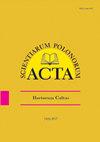黑豆蚜虫种群数量和叶绿素组成随黑豆蚜虫侵染胁迫条件的变化而变化
IF 0.7
4区 农林科学
Q4 HORTICULTURE
引用次数: 0
摘要
蚕豆蚜。是一种以韧皮部为食的昆虫,由于与进食相关的损害和经济上重要的植物病毒的传播,它对世界各地的黑木耳和农业造成了严重损害。这些蚜虫会对被攻击的器官造成有害影响,比如光合同化物的耗竭。昆虫喂养可以减少叶绿素分解代谢。在目前的调查中,我们确定了生长在波兰中东部Siedlce周围绿色区域的Viburnum opulus灌木、野生植物和花园品种的未感染叶片和Aphis fabae感染叶片中的叶绿素a和b水平(SPAD读数)。蚕豆对叶绿素A+b水平有影响。昆虫取食降低了受侵扰灌木中光合色素的浓度。被蚜虫占据的植物的叶绿素水平明显低于没有发现蚜虫的植物的水平。我们还发现,叶绿素水平随着生长季节的进展而增加,不同调查日期的叶绿素水平不同,最近一次调查(6月中旬)的叶绿素水平更高,而且植物所在的地方很重要,野生鹅掌楸的叶绿素水平比花园的略高。叶绿素水平可以作为植物对蚜虫危害反应的指标。本文章由计算机程序翻译,如有差异,请以英文原文为准。
Black bean aphid populations and chlorophyll composition changes as responses of guelder rose to aphid infestation stress conditions
Aphis fabae Scop. is phloem-feeding insect that cause substantial damage to horticulare and agriculture worldwide due to feeding – related damage and the transmission of economically important plant viruses. These aphids cause a detrimental effects in attacked organs, like depletion of photoassimilates. Insect feeding can among others reduced chlorophyll catabolism. In the present investigations we determined the chlorophyll a and b levels (SPAD readings) in uninfested leaves and in Aphis fabae-infested leaves of Viburnum opulus shrubs, wild plants and garden variety, which were grown in green areas around Siedlce, east central Poland. Feeding by A. fabae affected chlorophyll a + b level. The insect feeding reduces the concentration of photosynthetic pigment in the infested shrubs. The level of chlorophyll in plants occupied by aphids was clearly lower than the level in plants where aphids were not found. We also found that chlorophyll levels increased with the progress of growing season, the level of chlorophyll differed between date of survey, being higher for the latest survey (mid-June) and that the place where the plant is located is important, wild V. opulus have slightly more level of chlorophyll compared to garden ones. Chlorophyll level might be useful as an indicator of plant responses to aphid damage.
求助全文
通过发布文献求助,成功后即可免费获取论文全文。
去求助
来源期刊
CiteScore
1.30
自引率
14.30%
发文量
61
审稿时长
4-8 weeks
期刊介绍:
In Acta Scientiarum Polonorum Hortorum Cultus we publish original research papers and review articles containing new and significant information on broad aspects of horticulture and related disciplines. The papers are published in English only, in six issues yearly.

 求助内容:
求助内容: 应助结果提醒方式:
应助结果提醒方式:


